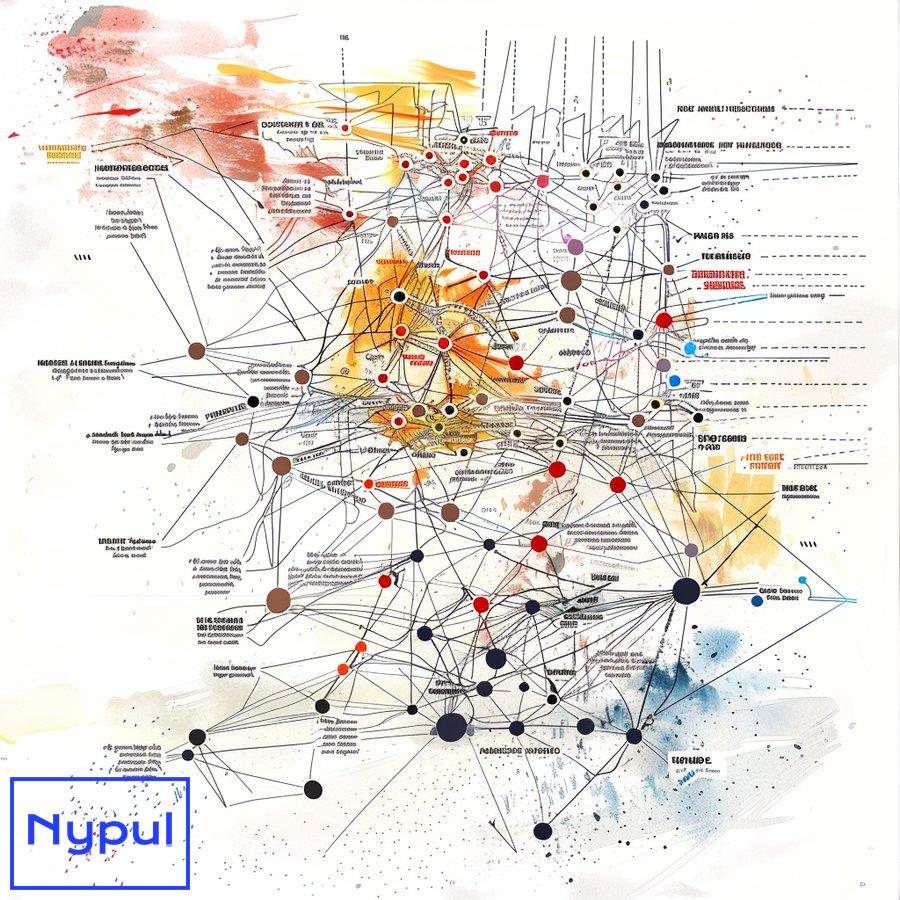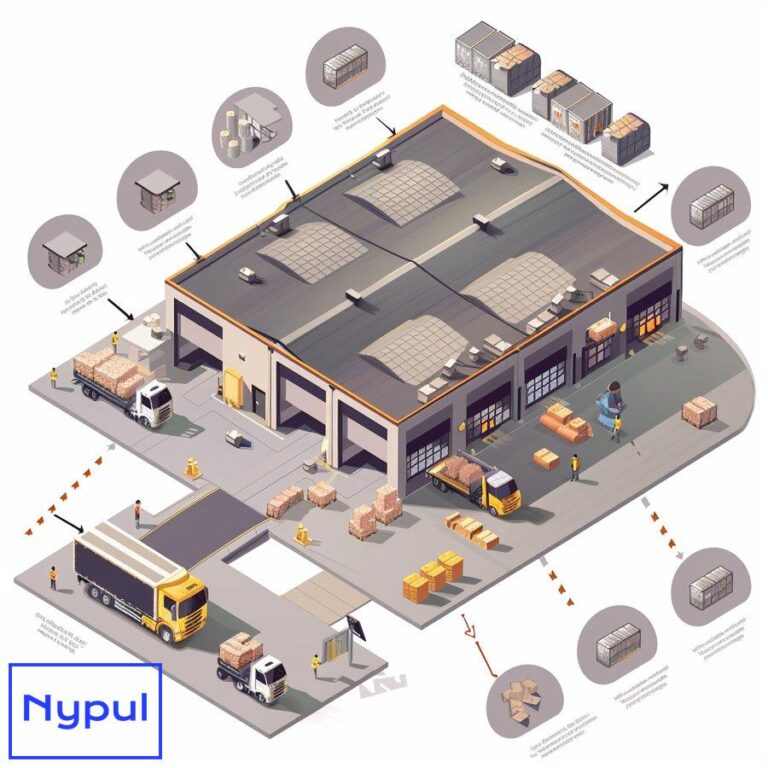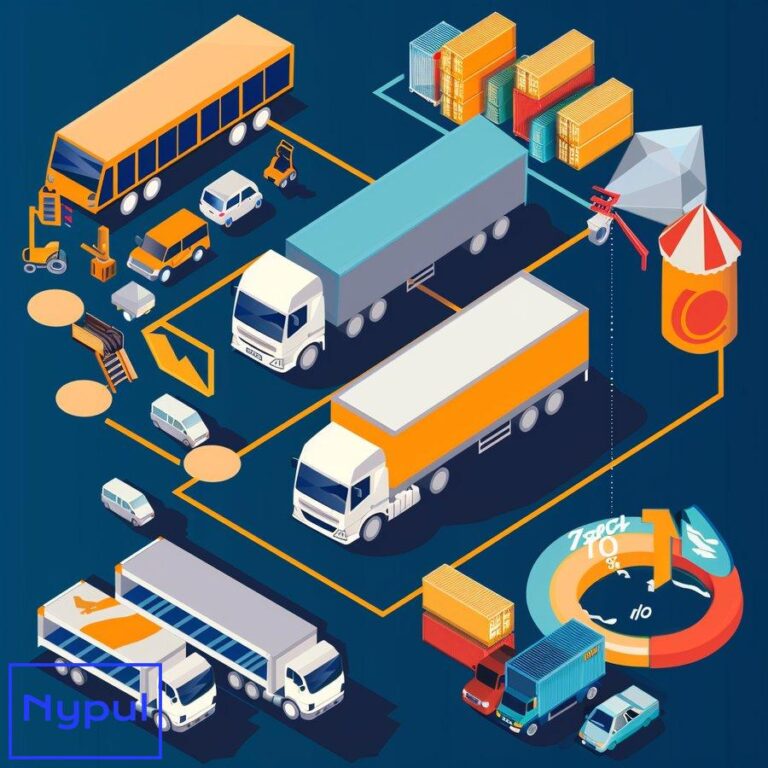What Is the Process of Drayage Shipment
Who are the key players involved in the drayage process?

Drayage shipments involve several critical stakeholders working in concert to move freight efficiently over short distances. Understanding the roles and responsibilities of each player is essential for smooth drayage operations.
Shippers
Shippers initiate the drayage process by requesting transportation for their goods. These entities can be manufacturers, retailers, or other businesses that need to move freight from ports or rail yards to warehouses or distribution centers. Shippers are responsible for:
- Providing accurate shipment details including weight, dimensions, and special handling requirements
- Coordinating pickup and delivery schedules
- Ensuring proper documentation and customs clearance for international shipments
Drayage Carriers
Drayage carriers are the trucking companies that physically transport containers and cargo. They play a central role by:
- Providing trucks and chassis for container transport
- Employing skilled drivers familiar with port and rail yard operations
- Managing fleet logistics and dispatching
- Ensuring regulatory compliance and safety standards
Port/Terminal Operators
Ports and intermodal terminals serve as key transfer points in the drayage process. Their responsibilities include:
- Managing container storage and retrieval
- Coordinating vessel loading/unloading
- Providing necessary equipment like cranes and reach stackers
- Overseeing security and customs procedures
Freight Forwarders
Freight forwarders act as intermediaries, arranging transportation and logistics on behalf of shippers. In drayage operations, they:
- Coordinate with carriers and terminals to schedule pickups/deliveries
- Handle customs documentation and clearance
- Provide tracking and visibility throughout the shipment
- Offer value-added services like cargo insurance
Customs Brokers
For international shipments, customs brokers facilitate the clearance process by:
- Preparing and submitting customs documentation
- Calculating and paying import duties and taxes
- Ensuring compliance with import/export regulations
- Coordinating inspections when required
Chassis Providers
Chassis are essential equipment for transporting containers. Chassis providers:
- Maintain a fleet of chassis in various sizes
- Offer chassis leasing and rental services to carriers
- Manage chassis pools at ports and terminals
- Ensure proper maintenance and repairs
Technology Providers
As drayage becomes increasingly digitized, technology companies play a growing role by offering:
- Transportation management systems (TMS) for shipment planning and execution
- Visibility platforms for real-time tracking
- Digital marketplaces connecting shippers and carriers
- Automated scheduling and dispatching tools
Understanding the interplay between these key players is crucial for efficient drayage operations. Effective communication and coordination among all stakeholders help minimize delays, reduce costs, and improve overall supply chain performance.
| Stakeholder | Primary Responsibilities | Key Interactions |
|---|---|---|
| Shippers | Initiate shipments, provide cargo details | Freight forwarders, drayage carriers |
| Drayage Carriers | Transport containers, manage fleet | Shippers, port operators, chassis providers |
| Port/Terminal Operators | Manage container transfers, provide equipment | Carriers, customs brokers, shippers |
| Freight Forwarders | Coordinate logistics, handle documentation | Shippers, carriers, customs brokers |
| Customs Brokers | Facilitate customs clearance, ensure compliance | Shippers, port operators, freight forwarders |
| Chassis Providers | Supply and maintain chassis | Carriers, port operators |
| Technology Providers | Offer digital solutions for planning and visibility | All stakeholders |
This ecosystem of players works together to ensure the seamless movement of goods in the critical first and last miles of intermodal transportation. Each entity brings specialized expertise and resources, contributing to the overall efficiency and reliability of drayage operations.
How does the step-by-step drayage shipment process work?
The drayage shipment process involves a series of coordinated steps to move containers efficiently between ports, rail yards, and inland destinations. Understanding this process is crucial for shippers and logistics professionals to ensure smooth operations and minimize delays.
Step 1: Shipment Booking
The process begins when a shipper or freight forwarder books a drayage shipment. This involves:
- Providing shipment details (container number, weight, dimensions)
- Specifying pickup and delivery locations
- Indicating any special handling requirements
- Agreeing on pricing and service terms
Step 2: Pre-arrival Planning
Before the container arrives at the port or rail terminal, several preparatory steps occur:
- Customs documentation is prepared and submitted
- Terminal appointments are scheduled for pickup
- Chassis availability is confirmed
- Drivers are assigned and dispatched
Step 3: Container Arrival and Release
When the container arrives at the port or rail terminal:
- The terminal processes the container and updates its status
- Customs clearance is completed (for international shipments)
- The container is released for pickup, often via electronic notification
Step 4: Container Pickup
The drayage carrier retrieves the container from the terminal:
- The driver checks in at the terminal gate
- The container is located and loaded onto the chassis
- Necessary paperwork is completed and verified
- The driver exits the terminal with the loaded container
Step 5: Transportation
The loaded container is transported to its destination:
- The driver follows the designated route
- Real-time tracking updates may be provided
- Any required stops or inspections are conducted
Step 6: Delivery and Unloading
Upon arrival at the destination (warehouse, distribution center, etc.):
- The driver checks in and presents documentation
- The container is unloaded, often within a specified time window
- Any discrepancies or damages are noted
Step 7: Empty Container Return
After unloading, the empty container must be returned:
- The driver transports the empty container back to the designated location
- The container is inspected for damage
- The return is documented, completing the drayage cycle
Step 8: Invoicing and Payment
The final step involves financial settlement:
- The drayage carrier generates an invoice for services rendered
- Any additional charges (detention, demurrage) are calculated
- Payment is processed according to agreed terms
Throughout this process, communication and coordination between all parties are essential. Many drayage operations now utilize digital platforms to streamline these steps, providing real-time updates and improving overall efficiency.
| Step | Key Actions | Responsible Parties |
|---|---|---|
| Shipment Booking | Provide shipment details, agree on terms | Shipper, Freight Forwarder, Drayage Carrier |
| Pre-arrival Planning | Prepare documentation, schedule appointments | Freight Forwarder, Customs Broker, Drayage Carrier |
| Container Arrival and Release | Process container, complete customs clearance | Terminal Operator, Customs Broker |
| Container Pickup | Retrieve container from terminal | Drayage Carrier |
| Transportation | Move container to destination | Drayage Carrier |
| Delivery and Unloading | Unload container at final destination | Drayage Carrier, Consignee |
| Empty Container Return | Return empty container to designated location | Drayage Carrier |
| Invoicing and Payment | Generate invoice, process payment | Drayage Carrier, Shipper/Freight Forwarder |
This step-by-step process highlights the complexity of drayage operations and the need for seamless coordination among various stakeholders. By understanding each stage, shippers and logistics professionals can better manage their drayage shipments, anticipate potential issues, and work towards optimizing the overall process.
What equipment and infrastructure are essential for drayage operations?
Efficient drayage operations rely on a combination of specialized equipment and robust infrastructure. Understanding these essential components is crucial for anyone involved in managing or optimizing drayage shipments.
Trucks

The backbone of drayage operations, trucks are specifically designed for short-haul container transport:
- Class 8 heavy-duty trucks with sufficient power for container loads
- Day cabs optimized for local operations rather than long-haul sleeper cabs
- Fuel-efficient models to reduce operating costs and emissions
Chassis
Chassis are the skeletal trailers used to transport containers:
- Various sizes to accommodate different container lengths (20′, 40′, 45′)
- Specialized types like tri-axle chassis for heavier loads
- Chassis pools at ports and terminals to improve availability
Containers
While not owned by drayage carriers, containers are integral to operations:
- Standard sizes (20′, 40′, 45′) for intermodal compatibility
- Specialized containers for refrigerated or oversized cargo
- Empty container depots for storage and repositioning
Terminal Equipment
Ports and rail terminals require specialized equipment for efficient container handling:
- Gantry cranes for loading/unloading ships
- Reach stackers and top loaders for moving containers within the terminal
- Yard trucks (hostlers) for repositioning containers and chassis
Information Technology Systems
Modern drayage operations rely heavily on digital infrastructure:
- Transportation Management Systems (TMS) for planning and execution
- Electronic Data Interchange (EDI) for seamless information sharing
- GPS tracking systems for real-time visibility
- Mobile apps for drivers to manage pickups, deliveries, and documentation
Road Infrastructure
Adequate road networks are crucial for efficient drayage:
- Well-maintained highways connecting ports to inland destinations
- Dedicated truck lanes in congested areas
- Sufficient parking and staging areas near ports and terminals
Port and Terminal Infrastructure
Ports and intermodal terminals serve as critical nodes in the drayage network:
- Deep-water berths for large container ships
- Extensive container yards for storage and sorting
- On-dock rail facilities for seamless intermodal transfers
- Gate systems for efficient truck check-in and check-out
Maintenance Facilities
Keeping equipment in top condition is essential for reliable drayage operations:
- Truck and chassis maintenance shops
- Tire service centers
- Fueling stations strategically located near ports and major routes
Safety and Security Infrastructure
Ensuring the safety and security of cargo and personnel is paramount:
- Secure parking areas for loaded containers
- CCTV systems at terminals and warehouses
- X-ray and radiation detection equipment for cargo screening
Environmental Infrastructure
As sustainability becomes increasingly important, new infrastructure is emerging:
- Electric vehicle charging stations for eco-friendly drayage trucks
- Shore power facilities at ports to reduce vessel emissions while docked
- Noise reduction barriers in urban areas near ports
| Equipment/Infrastructure | Purpose | Key Features |
|---|---|---|
| Trucks | Container transport | Heavy-duty, day cabs, fuel-efficient |
| Chassis | Container support | Various sizes, specialized types |
| Containers | Cargo containment | Standard sizes, specialized types |
| Terminal Equipment | Container handling | Cranes, reach stackers, yard trucks |
| IT Systems | Operations management | TMS, EDI, GPS tracking |
| Road Infrastructure | Transportation network | Highways, truck lanes, parking areas |
| Port/Terminal Infrastructure | Cargo transfer points | Berths, yards, rail facilities, gate systems |
| Maintenance Facilities | Equipment upkeep | Repair shops, tire centers, fueling stations |
| Safety/Security Infrastructure | Cargo and personnel protection | Secure areas, CCTV, screening equipment |
| Environmental Infrastructure | Sustainability measures | EV charging, shore power, noise barriers |
This comprehensive ecosystem of equipment and infrastructure forms the foundation of efficient drayage operations. Each component plays a crucial role in ensuring the smooth flow of containers from ports and rail yards to their final destinations. As technology advances and environmental concerns grow, this infrastructure continues to evolve, presenting both challenges and opportunities for drayage operators and shippers alike.
How do costs factor into drayage shipments?
Understanding the cost structure of drayage shipments is crucial for shippers and logistics professionals to effectively budget and optimize their supply chain operations. Drayage costs can vary significantly based on several factors and include both direct and indirect expenses.
Base Rate
The foundation of drayage pricing is the base rate, which typically covers:
- Driver wages
- Fuel costs
- Equipment usage (truck and chassis)
- Basic insurance
This rate is usually calculated per container move and can vary based on distance, container size, and market conditions.
Fuel Surcharges
To account for fluctuating fuel prices, many drayage providers implement fuel surcharges:
- Calculated as a percentage of the base rate
- Adjusted regularly based on current fuel prices
- May be higher for longer distances or less fuel-efficient routes
Accessorial Charges
Additional fees for services beyond the basic drayage move:
- Chassis splits (when chassis is picked up separately from the container)
- Pre-pulls (retrieving a container before the scheduled pickup time)
- Yard moves (repositioning containers within a terminal)
- Scale tickets (weighing the container)
- Detention charges (when loading/unloading exceeds allotted time)
Port and Terminal Fees
Costs associated with port and terminal operations:
- Gate fees for entering/exiting the terminal
- Container lift charges
- Storage fees for containers left at the terminal beyond free time
- Congestion surcharges during peak periods
Customs and Regulatory Costs
For international shipments, additional expenses may include:
- Customs brokerage fees
- Import duties and taxes
- Inspection fees
- Compliance-related documentation costs
Insurance
While basic insurance is often included in the base rate, additional coverage may be necessary:
- Cargo insurance to protect against loss or damage
- Liability insurance for potential accidents or environmental incidents
Technology and Administrative Costs
Indirect costs associated with managing drayage operations:
- Transportation Management System (TMS) fees
- EDI and communication costs
- Administrative overhead for booking and documentation
Demurrage and Per Diem Charges
Penalties for holding containers or chassis beyond the allowed free time:
- Demurrage for containers left at the terminal
- Per diem charges for retaining containers or chassis
Seasonal and Market Fluctuations
Drayage costs can vary based on market conditions:
- Peak season surcharges during high-volume periods
- Rate increases due to capacity shortages
- Discounts during slower periods or for high-volume shippers
Environmental and Compliance Costs
As regulations evolve, new costs may emerge:
- Clean truck fees in ports with environmental initiatives
- Compliance costs for meeting emissions standards
- Investments in eco-friendly equipment
| Cost Factor | Description | Variability |
|---|---|---|
| Base Rate | Core transportation cost | Depends on distance, container size |
| Fuel Surcharges | Adjustment for fuel price fluctuations | Changes with fuel prices |
| Accessorial Charges | Fees for additional services | Varies based on specific needs |
| Port/Terminal Fees | Costs for port/terminal operations | Differs by location and timing |
| Customs/Regulatory | Expenses for international shipments | Varies by country and commodity |
| Insurance | Protection against loss or liability | Depends on coverage level |
| Technology/Admin | Indirect costs for management | Relatively stable |
| Demurrage/Per Diem | Penalties for extended container use | Increases with time beyond free period |
| Seasonal/Market | Adjustments based on market conditions | Fluctuates with supply and demand |
| Environmental | Costs related to sustainability efforts | Increasing over time |
Understanding these cost factors is essential for effective drayage management. Shippers can optimize their expenses by:
- Negotiating favorable contract terms with drayage providers
- Improving operational efficiency to minimize accessorial charges
- Carefully managing container and chassis usage to avoid demurrage and per diem
- Leveraging technology for better planning and visibility
- Considering alternative routing or timing to avoid peak season surcharges
By comprehensively analyzing and managing these various cost components, shippers can develop more accurate budgets, identify cost-saving opportunities, and ultimately improve the overall efficiency of their supply chain operations.
What are the main challenges in drayage operations?
Drayage operations, while crucial for the smooth flow of goods in intermodal transportation, face numerous challenges that can impact efficiency, costs, and reliability. Understanding these challenges is essential for stakeholders to develop effective strategies and solutions.
Port Congestion

One of the most significant challenges in drayage operations:
- Long wait times at terminal gates
- Delayed container availability
- Increased idle time for drivers and equipment
- Ripple effects on subsequent shipments and schedules
Port congestion can result from various factors, including high cargo volumes, labor shortages, or equipment breakdowns.
Equipment Shortages
Imbalances in equipment availability can severely disrupt drayage operations:
- Chassis shortages, especially during peak seasons
- Container shortages due to global trade imbalances
- Truck shortages during high-demand periods
These shortages lead to delays, increased costs, and potential loss of business.
Driver Shortages and Retention
The drayage industry, like much of the trucking sector, faces ongoing driver challenges:
- Difficulty attracting new drivers to the profession
- High turnover rates due to challenging workDriver Shortages and Retention
The drayage industry, like much of the trucking sector, faces ongoing driver challenges:
- Difficulty attracting new drivers to the profession
- High turnover rates due to challenging work conditions, long hours, and low pay
- Regulatory hurdles such as obtaining necessary licenses and certifications
These factors contribute to a limited pool of qualified drivers, leading to increased labor costs and potential delays in shipments.
Regulatory Compliance
Navigating the complex landscape of regulations can be daunting for drayage operators:
- Compliance with local, state, and federal transportation regulations
- Adherence to environmental standards, such as emissions regulations
- Meeting safety and security requirements at ports and terminals
Failure to comply with regulations can result in fines, penalties, and operational disruptions.
Technological Integration
While technology offers many benefits, integrating new systems can pose challenges:
- High costs associated with implementing advanced technology solutions
- Resistance to change from employees accustomed to traditional methods
- The need for ongoing training and support to ensure effective usage
These challenges can slow down the adoption of technology that could enhance efficiency and visibility in drayage operations.
Cost Management
Managing costs effectively in a fluctuating market is a significant challenge:
- Rising fuel prices impacting overall transportation costs
- Unpredictable accessorial charges and fees
- Market volatility leading to fluctuating rates and demand
Shippers and carriers must continuously analyze their cost structures and seek ways to mitigate rising expenses.
Environmental Concerns
As sustainability becomes a priority, drayage operations face increasing pressure to reduce their environmental impact:
- Compliance with stricter emissions regulations
- Investment in cleaner technologies and vehicles
- Balancing cost-effectiveness with eco-friendly initiatives
These challenges require strategic planning and investment in sustainable practices.
Infrastructure Limitations
Inadequate infrastructure can hinder drayage efficiency:
- Poor road conditions leading to delays and increased vehicle wear
- Limited capacity at ports and terminals causing bottlenecks
- Insufficient staging areas for trucks near ports
These infrastructure challenges can lead to increased operational costs and delays in the supply chain.
Communication Gaps
Ineffective communication among stakeholders can result in misunderstandings and delays:
- Lack of real-time visibility into shipment status
- Misalignment between shippers, carriers, and terminal operators
- Delays in information sharing leading to operational inefficiencies
Enhancing communication and collaboration among all parties is essential for overcoming these challenges.
| Challenge | Description | Impact |
|---|---|---|
| Port Congestion | Long wait times and delays at terminals | Increased idle time and costs |
| Equipment Shortages | Limited availability of trucks, chassis, and containers | Delays and potential loss of business |
| Driver Shortages | Difficulty in attracting and retaining qualified drivers | Higher labor costs and shipment delays |
| Regulatory Compliance | Navigating complex regulations and standards | Risk of fines and operational disruptions |
| Technological Integration | Challenges in adopting new technology | Slower efficiency improvements |
| Cost Management | Rising costs and unpredictable expenses | Strain on budgets and profitability |
| Environmental Concerns | Pressure to reduce environmental impact | Need for investment in sustainable practices |
| Infrastructure Limitations | Inadequate roads and terminal capacity | Operational delays and increased costs |
| Communication Gaps | Ineffective information sharing among stakeholders | Operational inefficiencies and misunderstandings |
Addressing these challenges requires a proactive approach from all stakeholders involved in drayage operations. By fostering collaboration, investing in technology, and advocating for infrastructure improvements, the industry can enhance efficiency and reliability in the drayage process.
How is technology improving drayage efficiency?
Technology plays a pivotal role in enhancing the efficiency of drayage operations, addressing many of the challenges faced by stakeholders. By leveraging innovative solutions, companies can streamline processes, improve communication, and reduce costs.
Transportation Management Systems (TMS)
TMS solutions have become essential tools for managing drayage operations:
- Automate planning and scheduling of shipments
- Provide real-time visibility into shipment status and location
- Optimize routes to reduce fuel consumption and transit times
- Facilitate communication between shippers, carriers, and terminals
These systems enhance operational efficiency and help companies make data-driven decisions.
Real-Time Tracking and Visibility
Real-time tracking technologies provide stakeholders with up-to-date information on shipments:
- GPS and RFID technologies enable precise tracking of containers and trucks
- Visibility platforms allow shippers to monitor the status of their shipments
- Alerts and notifications can be set up for delays or issues
This transparency improves communication and helps stakeholders respond quickly to potential disruptions.
Digital Marketplaces
Digital platforms connecting shippers and carriers are transforming the drayage landscape:
- Facilitate quick and efficient matching of available capacity with shipment needs
- Enable shippers to compare rates and services from multiple carriers
- Streamline the booking and payment processes
These marketplaces enhance competition and can lead to cost savings for shippers.
Automated Scheduling and Dispatching
Automation in scheduling and dispatching reduces manual errors and improves efficiency:
- Algorithms can optimize driver assignments based on availability and proximity
- Automated notifications keep drivers informed of changes in schedules
- Enhanced coordination between drivers and terminal operators
This automation leads to faster turnaround times and improved resource utilization.
Electronic Data Interchange (EDI)
EDI systems streamline communication and documentation processes:
- Facilitate the exchange of shipment information between shippers, carriers, and terminals
- Reduce paperwork and manual data entry, minimizing errors
- Enable faster processing of customs documentation for international shipments
By automating information exchange, EDI improves accuracy and speeds up operations.
Mobile Applications
Mobile technology empowers drivers and operators with essential tools:
- Apps provide real-time updates on shipments and schedules
- Drivers can access documentation and communicate with dispatchers
- Mobile platforms facilitate electronic signatures and proof of delivery
These applications enhance driver efficiency and improve overall communication.
Data Analytics and Reporting
Data analytics tools allow stakeholders to gain insights into their operations:
- Analyze performance metrics such as delivery times, costs, and driver utilization
- Identify trends and areas for improvement
- Enable predictive analytics for better forecasting and planning
By leveraging data, companies can make informed decisions to enhance efficiency.
Blockchain Technology
Blockchain offers potential benefits for improving transparency and security in drayage:
- Provides a secure and immutable record of transactions and shipments
- Enhances traceability of cargo throughout the supply chain
- Reduces the risk of fraud and errors in documentation
While still emerging, blockchain technology holds promise for enhancing trust and efficiency in drayage operations.
Telematics
Telematics systems provide valuable data on vehicle performance and driver behavior:
- Monitor fuel consumption, engine diagnostics, and maintenance needs
- Track driver performance metrics such as speed and braking patterns
- Enable proactive maintenance to reduce downtime
These insights help optimize fleet management and improve operational efficiency.
| Technology | Benefits | Impact on Efficiency |
|---|---|---|
| Transportation Management Systems (TMS) | Automates planning and scheduling | Reduces manual errors, improves resource allocation |
| Real-Time Tracking and Visibility | Provides up-to-date shipment information | Enhances communication, enables quick responses |
| Digital Marketplaces | Connects shippers and carriers | Increases competition, leads to cost savings |
| Automated Scheduling and Dispatching | Optimizes driver assignments | Reduces turnaround times, improves resource utilization |
| Electronic Data Interchange (EDI) | Streamlines documentation processes | Minimizes errors, speeds up operations |
| Mobile Applications | Empowers drivers with essential tools | Enhances efficiency and communication |
| Data Analytics and Reporting | Provides insights into operations | Informs decision-making, identifies areas for improvement |
| Blockchain Technology | Enhances transparency and security | Reduces fraud, improves trust in transactions |
| Telematics | Monitors vehicle performance and driver behavior | Optimizes fleet management, reduces downtime |
The integration of these technologies into drayage operations is transforming the industry, leading to improved efficiency, reduced costs, and enhanced service levels. As technology continues to evolve, stakeholders must remain adaptable and open to innovation to stay competitive in the dynamic logistics landscape.
What strategies can optimize drayage shipments?
Optimizing drayage shipments is essential for improving efficiency, reducing costs, and enhancing service levels. Implementing effective strategies can help shippers and carriers navigate the complexities of the drayage process and achieve better outcomes.
Effective Communication and Collaboration

Fostering open lines of communication among all stakeholders is crucial:
- Establish regular check-ins between shippers, carriers, and terminal operators
- Utilize digital platforms for real-time updates and information sharing
- Encourage collaboration to resolve issues quickly and efficiently
Effective communication minimizes misunderstandings and enhances overall operational efficiency.
Utilizing Technology Solutions
Leveraging technology can significantly improve drayage operations:
- Implement Transportation Management Systems (TMS) for better planning and visibility
- Use real-time tracking and visibility tools to monitor shipments
- Adopt mobile applications to empower drivers with essential information
Technology solutions streamline processes and provide valuable insights for decision-making.
Optimizing Routes and Schedules
Efficient route planning and scheduling can reduce transit times and costs:
- Analyze traffic patterns and road conditions to select optimal routes
- Schedule pickups and deliveries during off-peak hours to avoid congestion
- Utilize automated scheduling tools to improve resource allocation
Optimizing routes and schedules enhances operational efficiency and reduces delays.
Implementing Performance Metrics
Establishing key performance indicators (KPIs) helps track and improve performance:
- Monitor metrics such as on-time delivery rates, cost per shipment, and driver utilization
- Conduct regular performance reviews to identify areas for improvement
- Set targets and benchmarks to drive continuous improvement
Performance metrics provide valuable insights into operational effectiveness and help identify opportunities for optimization.
Training and Retaining Drivers
Investing in driver training and retention strategies is essential for success:
- Provide ongoing training on safety, regulations, and technology usage
- Offer competitive compensation and benefits to attract and retain drivers
- Foster a positive work environment to enhance job satisfaction
A well-trained and motivated driver workforce contributes to improved service levels and operational efficiency.
Streamlining Documentation Processes
Reducing paperwork and administrative burdens can enhance efficiency:
- Implement electronic documentation systems to minimize manual data entry
- Utilize EDI for seamless information exchange between stakeholders
- Standardize documentation processes to reduce errors and delays
Streamlining documentation improves accuracy and speeds up operations.
Managing Costs Effectively
Identifying and managing cost drivers is crucial for optimizing shipments:
- Analyze cost structures to identify areas for potential savings
- Negotiate favorable rates with carriers and service providers
- Monitor fuel prices and implement fuel-efficient practices
Effective cost management enhances profitability and competitiveness.
Enhancing Infrastructure and Facilities
Investing in infrastructure improvements can alleviate operational challenges:
- Advocate for better road conditions and capacity at ports and terminals
- Develop staging areas for trucks to reduce congestion
- Collaborate with local authorities to address infrastructure needs
Improved infrastructure enhances the overall efficiency of drayage operations.
Sustainability Initiatives
Implementing sustainable practices can improve efficiency and reduce costs:
- Invest in fuel-efficient vehicles and alternative energy sources
- Optimize routes to minimize fuel consumption and emissions
- Participate in programs aimed at reducing environmental impact
Sustainability initiatives not only benefit the environment but can also lead to cost savings and improved public perception.
| Strategy | Description | Expected Outcomes |
|---|---|---|
| Effective Communication | Foster open lines of communication | Minimized misunderstandings, enhanced efficiency |
| Utilizing Technology | Leverage digital solutions | Streamlined processes, valuable insights |
| Optimizing Routes/Schedules | Improve route planning and scheduling | Reduced transit times, lower costs |
| Implementing Performance Metrics | Establish KPIs for tracking | Improved operational effectiveness |
| Training/Retailing Drivers | Invest in driver development | Enhanced service levels, reduced turnover |
| Streamlining Documentation | Reduce paperwork burdens | Improved accuracy, faster operations |
| Managing Costs Effectively | Identify and control cost drivers | Enhanced profitability, competitiveness |
| Enhancing Infrastructure | Invest in facility improvements | Alleviated operational challenges |
| Sustainability Initiatives | Implement eco-friendly practices | Cost savings, improved public perception |
By adopting these strategies, shippers and carriers can optimize their drayage shipments, enhancing overall efficiency and competitiveness in the logistics landscape. Continuous improvement and adaptation to changing market conditions are essential for success in this dynamic industry.





